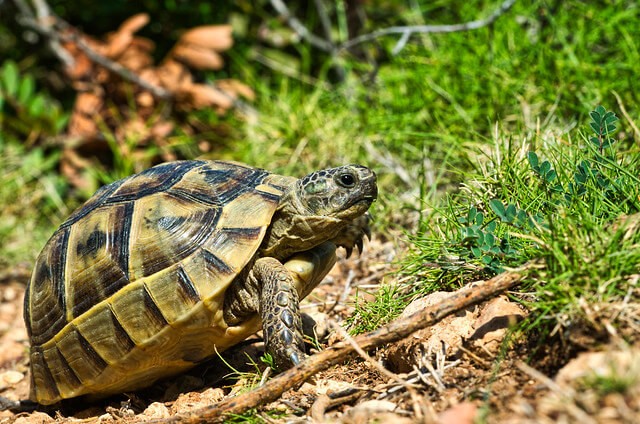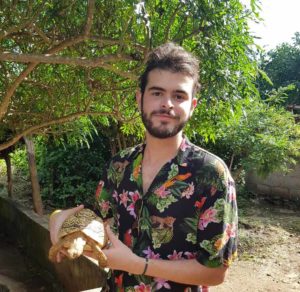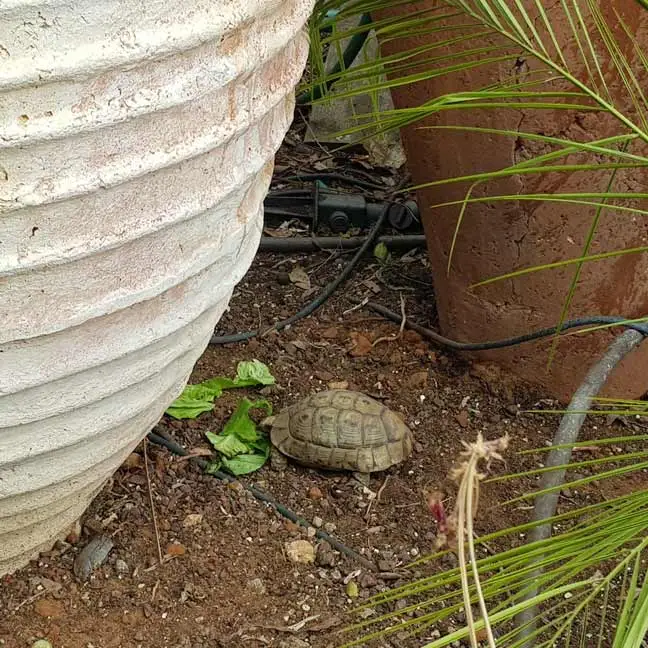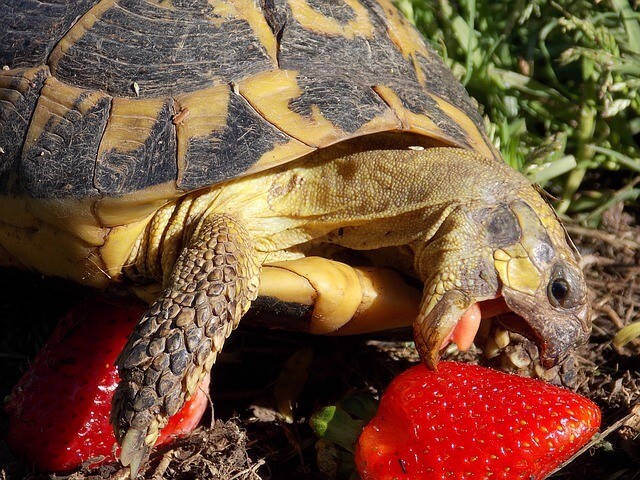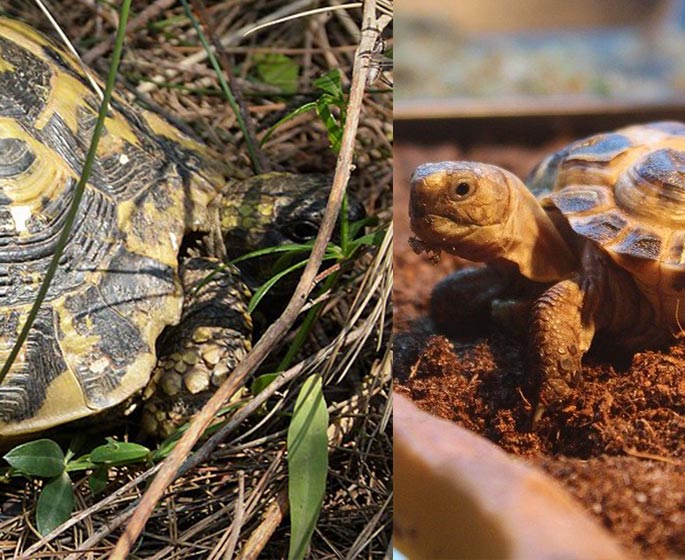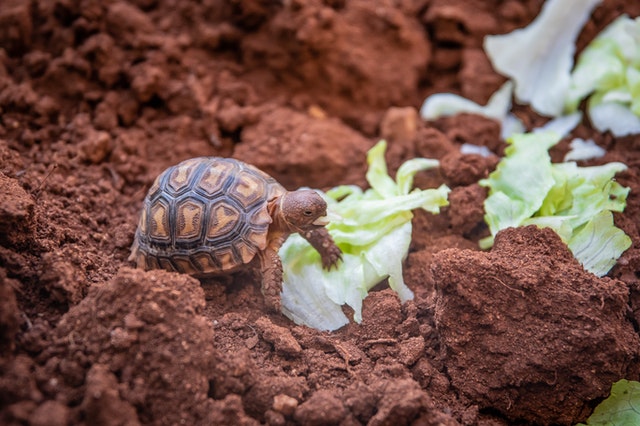Russian tortoises are a little type of tortoise common in Russia and other portions of Asia. A Russian tortoise is categorized as susceptible on the Red List of animals by IUCN due to human intrusion in their habitat and detaining them to vend in the market.
Russian tortoises spend 9 months hibernating in intense weather conditions. They are able to live over 5 decades in captivity once taken care of properly. When born, Russian tortoises are approximately one-inch in length and grow 8 to 10” long when completely mature. A female Russian tortoise is a bit bigger than a male. They also make excellent pets as they are easy to tame and sociable. They are also kids friendly.
There are many things you need to know about Russian tortoises, and to help you with that, here are the 25 interesting facts about Russian tortoises.
Russian Tortoise Has Amazing Appearance
The Russian tortoise, also called Horsfield’s tortoise, is a miniature species of tortoise native to central Asia and Russia. This type of tortoise is rounder than other species and has a flattened top rather than the common domed shells. It is light yellow color with some green on it, and the skin color, including the head, is dark gray, tan, or brown.
Russian Tortoise Falls under Reptilia Animals
The Russian tortoise belongs to the Reptilia type of animal. A reptile is a tetrapod vertebrate creature with four limbs and is descended from 4- limbed ancestors.
The Number of Russian Tortoises is Plentiful
There is no precise evidence of how many tortoises are, making it hard to count their populace in the untamed or captivity as family pets. As the Red List of IUCN classifies this tortoise as a susceptible species, experts assume that numbers are dwindling and are reducing.
Russian Tortoises Live in Rocky Dessert Areas
This tortoise usually lives in a rocky desert area in Russia and Central Asia, Pakistan, Turkmenistan, Afghanistan, and Kazakhstan. In these countries, you can find them in big underground burrows in which they hole up for 9 months in situations of intense temperatures.
Russian Tortoise’s habitat
You can find Russian tortoises in an unmitigated area of Russia. They inhabit barren, dry localities such as hillsides and deserts to loamy or sandy steppes. Most of the time, you can find them on 5000 feet elevations. They are able to live in an array of temperatures because of their stout and solid build bodies.
All through their range, these animal homes range from arid to barren environments with small to no rainwater and is usually found in deserts and grasslands with a close water source. With the temps getting very low or high, Russian tortoises will hole up in the burrows for many months to preserve themselves.
Russian Tortoises interact with other animals when needed.
Like most terrestrial tortoises, a Russian tortoise is a lonely or private animal that interacts with other types of tortoises just when needed for mating or food purposes. They don’t get forlorn like human beings or other kinds of animals.
Keeping many tortoises in one terrarium can be a problem as this kind of tortoise are protective and may fight and nibble others to declare supremacy. On the other hand, they aren’t totally isolative in nature because sometimes they can be grouped as one in burrows.
Russian Tortoise can live up to 50 years or more.
Like other tortoises, Russian tortoises have a slow metabolism that causes them to shed off energy at a slower pace compared to faster and smaller animals. Russian tortoises can live up to 50 years or more with proper nutrition and care. The diet of this tortoise includes green leafy vegetables and is rich in fiber that helps prolong their lifespan in the inside enclosure and assists in outliving the majority of their relatives in a big age gap.
How do Russian Tortoises reproduce?
With good conditions like old age and a good diet, they will mate, and this occurs after the initial few weeks from the time they appear of hibernation. The male tortoise will start the mating by surrounding the female tortoise as well as bobbing its head.
Unique conservation condition
The Red List of IUCN classified this tortoise as vulnerable. Human meddling in their indigenous home has caused lots of loss, and capturing to sell into the market has made their numbers I the wild lessen. On the other hand, Russian tortoises thriving in a local habitat are gradually and steadily growing as breeders play a role in the breeding as well as increasing number.
Russian tortoises lack teeth.
Tortoises are types of tortoises that reside on land instead of water. In real turtle fashion, Russian tortoises are armed with hard shells that defend their bodies against threats. Like turtles, they totally lack teeth.
Russian Tortoises are very cute and adorable.
A Russian tortoise is as cute and adorable as he can get, particularly babies. This small tortoise will show his affection towards his master by following him around and tolerating handling, eating straight from a human hand, and will come to you once he sees you.
Unique Communication Ways
Russian tortoises utilize a mixture of vocal and visual clues together with smell to keep in touch with others. Also, they communicate via touch, either through exploring using their mouths, bumping into stuff as well as stepping into feeling under his feet. The research of communication is extremely complex, and research shows that these tortoises are, most especially those in the wild, including their way of communication.
The Russian tortoise is the smallest type of tortoise.
A Russian tortoise is a small species of tortoise and is relatively small compared to other types of tortoises, which you can see right now. They have a size of five to ten inches. A female is bigger than makes to accommodate many eggs.
The Russian tortoise is a slow creature.
This is a slow creature with an average speed of 8 km per hour.
Russian Tortoise is very lightweight
This is a small tortoise that only weighs 0.5 to 2.5 pounds.
There is no female or male name of this species.
There is no specific name allocated to either gender or a Russian tortoise
A Baby Russian Tortoise is called hatchlings
A baby tortoise is called a hatchling and uses the egg tooth in smashing the eggshell and coming out. A hatchling is susceptible for the first couple of days.
Russian tortoises are vegetarian.
Russian tortoises’ natural diet takes account of juicy vegetation, which includes food such as plants, flowers, and twigs. Fruits aren’t recommended. The perfect diet comes as close as possible to the natural diet that is rich in calcium and fiber, as well as low in protein.
Russian tortoises aren’t poisonous.
A Russian tortoise is not poisonous. However, like all types of reptiles, they might carry bacteria in their gastrointestinal tracts, which are infectious to people via bites as well as other interactions. However, they don’t cause issues to them. For this reason, make sure to wash hands thoroughly after handling a tortoise or when done with the care process in the enclosure.
The Russian tortoise is a perfect household pet.
A Russian tortoise, in spite of its small size, has big qualities and is one popular type of tortoise kept as a pet. This tortoise is easy to handle, has a good enclosure, lots of light as well a high quality diet as this pet can get the parasite from the food they eat.
The Russian tortoise is social and friendly.
What makes a Russian tortoise a popular pet is its amazing personality that resembles a dog. A Russian tortoise is very friendly and sociable. Yes, they may bite you; however, that is because they may mistake your hand for food, so it is not their fault once you are bitten. All you have to do is be very careful if you are hand feeding them.
They Love to Climb and Explore
In spite of the shell being bulky and big, a Russian tortoise loves to explore as well as climbs diverse kinds of terrains.
Russian tortoises are diurnal.
Russian tortoises are diurnal, meaning they’re active during the day and rest in the evening.
Has strong tolerance to high temperatures
Another amazing thing about this Russian tortoise is that they have strong lenience to extreme temperatures, which is why they make it a good household pet.
The male Russian tortoise is easy to distinguish
A male Russian tortoise is easy to distinguish due to its big claws and tails. The color of the upper shell is black to reddish, while the body is yellowish in appearance.
Conclusion
So, here are just some of the things you need to know prior to deciding to get a Russian tortoise as a household pet. This will help you figure out if this is ideal for you or not.

